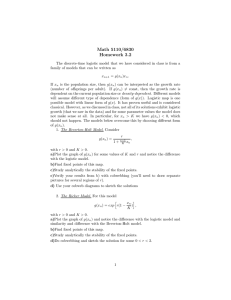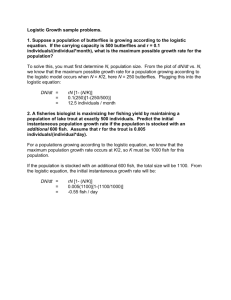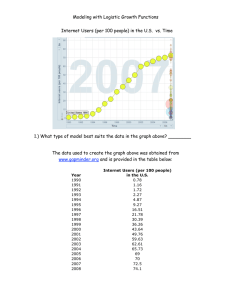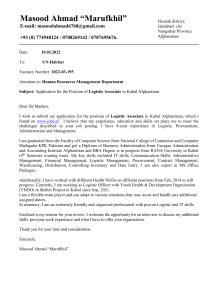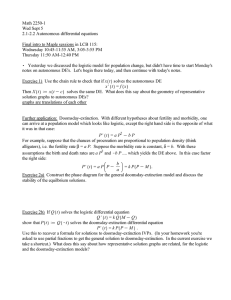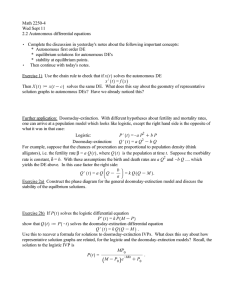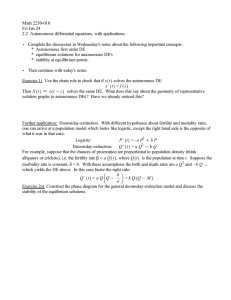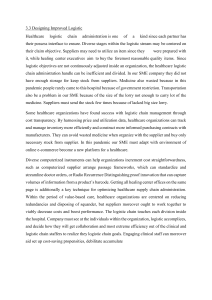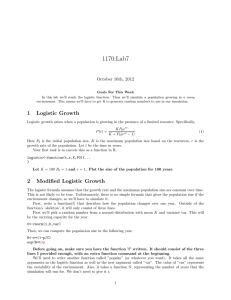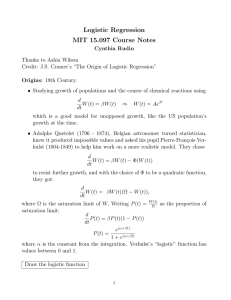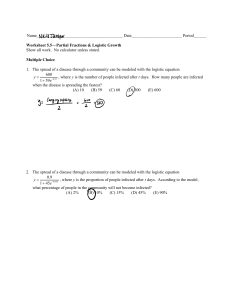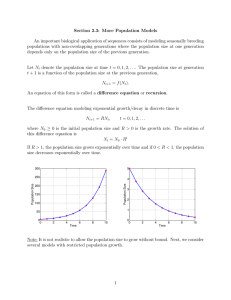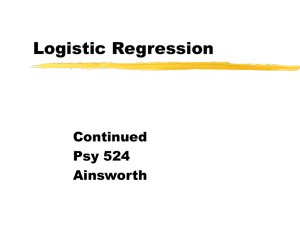University of Warwick, Department of Sociology, 2012/13 SO 201
advertisement
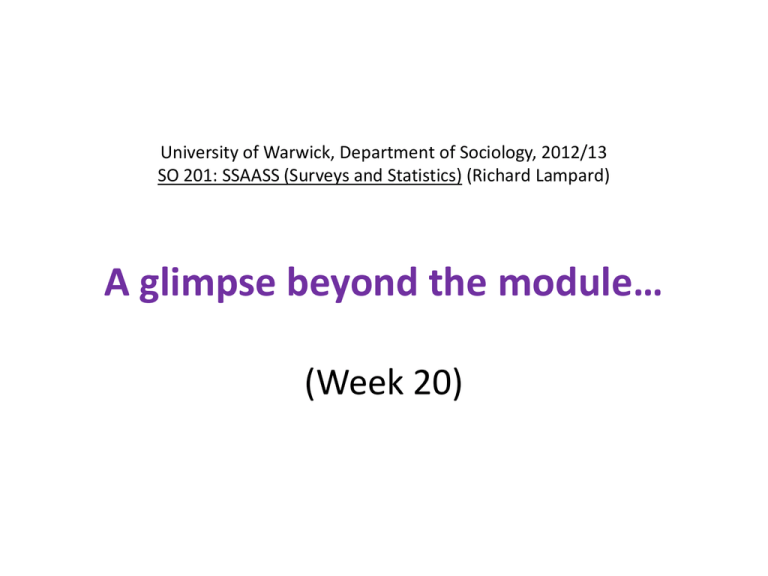
University of Warwick, Department of Sociology, 2012/13 SO 201: SSAASS (Surveys and Statistics) (Richard Lampard) A glimpse beyond the module… (Week 20) Multiple Correspondence Analysis • This isn’t exactly a straightforward extension of basic correspondence analysis, but it does allow information from multiple cross-tabulations to be pulled together to ‘unpack’ a mapping common to these. (See Chapter 7 of Cox, T.F. 2005. An Introduction to Multivariate Analysis. London: Hodder Arnold.) • It has been used extensively by the French social theorist Pierre Bourdieu, notably in his 1984 book Distinction. • See also Harrits, G.S. 2013. ‘Class, culture and politics: on the relevance of a Bourdieusian concept of class in political sociology’, Sociological Review 61.1: 172-202. Multi-level models • These models are used when there are units of analysis at two levels, e.g. pupils within schools. • However, sometimes the ‘higher’ level unit of analysis is a ‘nuisance’ level, e.g. where a sample of addresses is drawn from a sample of areas Software! • MLMs are not a feature of SPSS version 21. • Researchers use more flexible and/or specialised software such as MLwiN. Example Khattab, N., Johnston, R., Sirkeci, I. and Modood, T. 2012. ‘Returns on education amongst men in England and Wales: The impact of residential segregation and ethno-religious background’, Research in Social Stratification and Mobility 30.3: 296-309. Multinomial logistic regression • In many ways this is a straightforward extension of logistic regression. • The dependent variable has three or more categories, with one of these acting as the reference category. • An alternative is to break the analysis down into binary logistic regressions. Software again! • Multinomial logistic regressions can be fitted using SPSS (see Chapter 15 of Gray, C.D. and Kinnear, P. 2012. IBM SPSS Statistics 19 Made Simple. New York: Psychology Press.)
